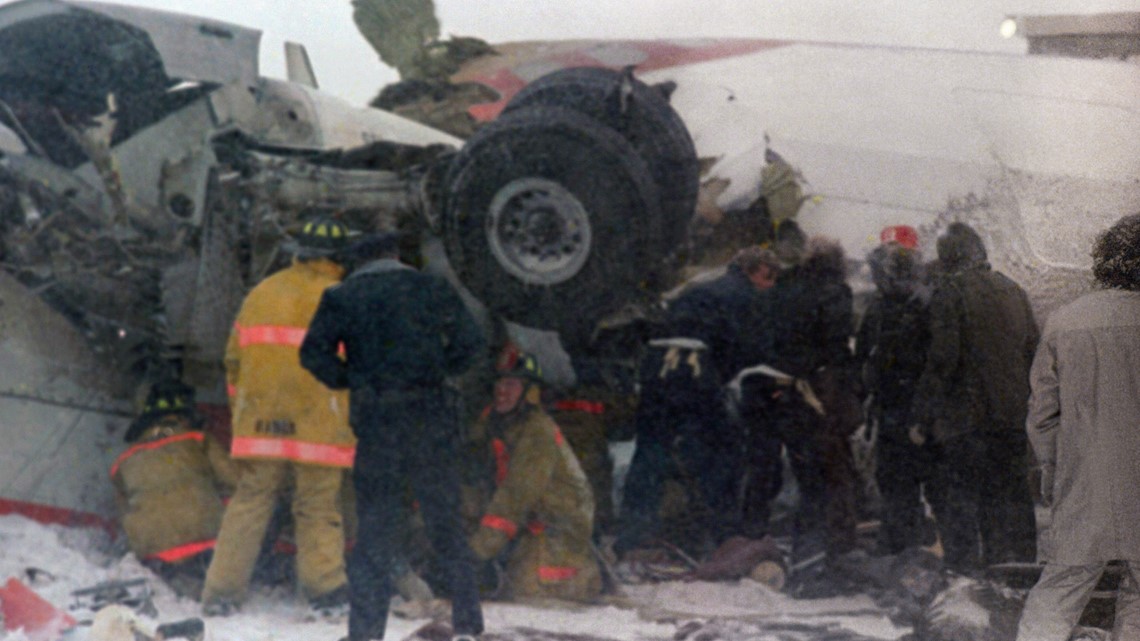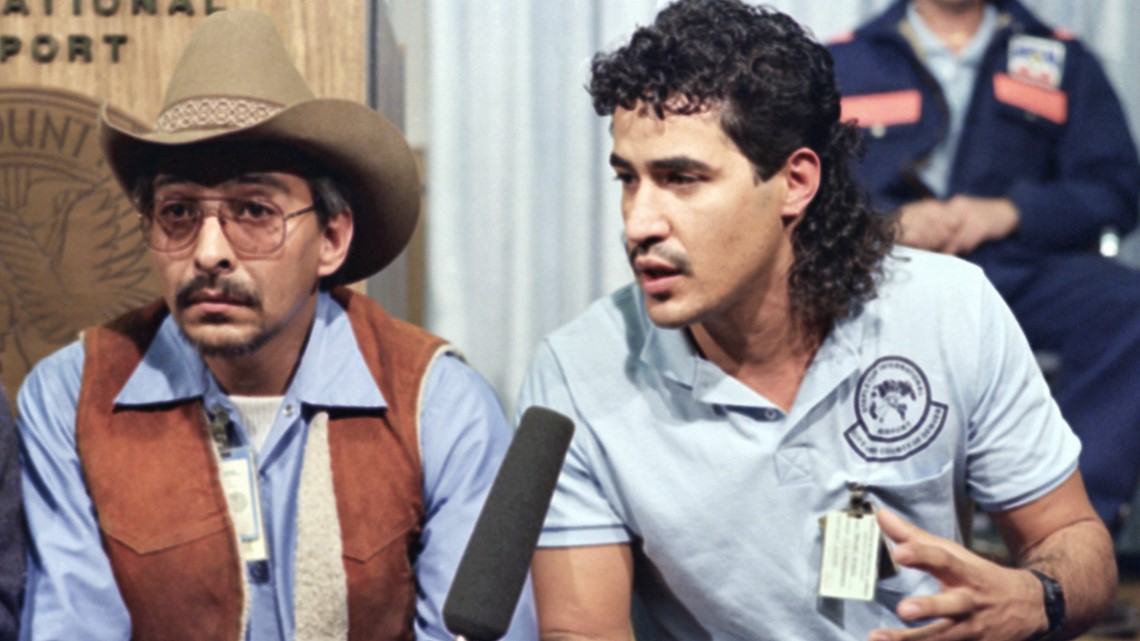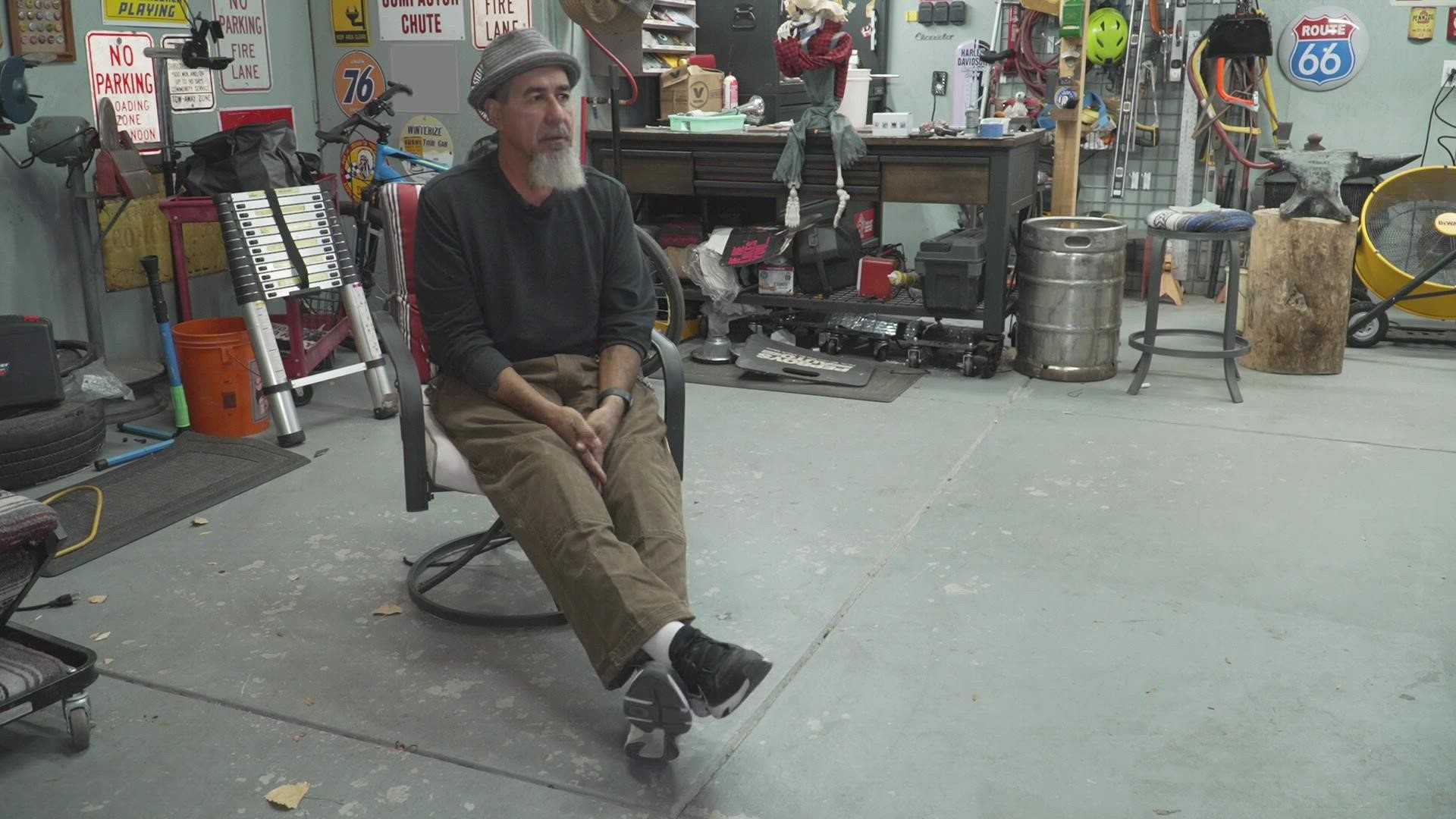DENVER — Thirty-five years later, Michael Thalley stops mid-sentence, his mind lingering on perhaps the worst moment in an afternoon of them.
It was a snowy Sunday – Nov. 15, 1987 – at Denver’s Stapleton International Airport, and Thalley, a snow machine operator, had been among the first at the scene after a Continental Airlines DC-9 smashed to the ground seconds after takeoff, turning over and breaking apart.
Thalley had picked up an infant out of the snow and debris along Runway 35 Left and carried the boy to a firefighter.
“He started giving him ...” Thalley starts to say before his voice trails off and he blows out a breath, fighting to hold back his emotions.
After a few seconds, the words finally come.
“CPR,” he says.
But soon the firefighter looked up, shaking his head back and forth.
“I walked away and went and continued,” Thalley says, tears filling his eyes.
That boy was among the 28 people whose lives ended that day in the crash of Flight 1713, a disaster federal investigators ultimately blamed on icing on the plane’s wings. Among the factors that led to that, the National Transportation Safety Board concluded, were the pilots who failed to follow basic procedures, an unacceptably long delay between the time the plane was sprayed with de-icing fluid and the time it finally began its takeoff roll, and confusion involving air-traffic controllers and the flight crew.
That 54 people survived was something of a miracle.
> Video Below: Extended interview with Michael Thalley:
'You're there every day'
Thalley grew up in Denver, attended John F. Kennedy High School and planned to start his career in the U.S. Army. That ended when his plans to attend the Army’s electronics school were denied.
He went to work for the City of Denver in 1981 on the grounds crew at Stapleton, the airport that used to sit about six miles northeast of downtown. He cut the lawn and watered the trees – and then he jumped at the chance to become an equipment operator.
In the ensuing years, he was involved in drills trying to prepare for a mass-casualty emergency. While he had a CPR class, no one in airport management envisioned that the maintenance crew would play a vital role in an accident.
“The only involvement we had was to go out and set up traffic control and get people in and out, make sure they had the supplies that they needed,” Thalley says.
He and his colleagues sometimes talked about the possibility of a plane going down, but Thalley never thought much about one actually crashing.
“You're there every day, and you watch these planes come and go,” he says. “And, you know, even like the big Army jets, the big carriers, you know, them things would go down the runway and you wouldn’t think they were going to take off. And they’d get to the end of the runway and they’d just lift up.”
> Video below: Survivors talk about the crash:
'The plane had crashed'
On that Sunday 35 years ago, Thalley was in a snow machine as Denver’s first winter storm of the season hit. He no idea he and other members of the maintenance crew would be thrust into the role of first responders.
Just after 2 p.m., as Thalley and the plowing crew waited for clearance to make another pass on the north-south runway that crossed Interstate 70, the radio crackled to life: “All personnel … a plane’s off the runway … we need all hands at 35 Left.”
“We would get them calls now and then – a small commuter plane would slide off the runway,” Thalley says. “You know, we go out there and, you know, maybe help them tow off, give it a little push or whatever. So that's what I was thinking.”
As he drove his snow machine closer, he realized this was no Cessna stuck in the mud.
“There was the debris field. There was stuff strewn everywhere,” he says. “And then the tail section was upside down in the snow. I realized the plane had crashed.”


After jumping out, he encountered a surreal scene.
“There was seats with people still in them,” he says. “And there was clothes and luggage strewn all over the place.”
He and several colleagues got to a group of passengers still buckled into their seats, which had been ripped out of the plane and sat in the snow. They were alive but suffering the effects of the winter temperatures. Thalley saw the yellow emergency slide hanging out of the rear section of the plane.
“I pulled out my knife, jumped up, and I cut, cut it out and brought it down, and we covered these people with it while we're trying to figure out what we were gonna do,” he says.
As firefighters and paramedics arrived, Thalley and other maintenance workers continued the task of looking for people to help.
Thalley was walking the debris field, kicking out small fires burning in the debris, when he encountered an airport manager who pointed to a baby in the snow.
“There was a sweater in the debris,” he says. “I grabbed the sweater, I wrapped it around him, I picked him up, and I went back to find the paramedics."
The boy was breathing. That was when Thalley met a firefighter and handed the boy to him. A few minutes later, it was clear the child would not live, and Thalley turned and looked for others to help.
> Video below: Firefighters and paramedics talk about the crash:
At one point, he and some of his colleagues entered a part of the fuselage, which lay upside down.
“There was still people strapped in their chairs upside down, alive and dead,” he says. “So we were trying to cut the people out that were alive to get them out. And then, you know, we had to cut the people who were dead out to get them out of the way to get back to people who were alive.”
As the scene swarmed with firefighters, paramedics, and police officers, the rescues continued for hours. The last survivor was pulled from the wreckage well after dark.
Thalley stayed until that man was freed, then headed home, feeling covered with death. He stood in the shower until the hot water turned cold.
After the crash
He returned to work within days. Three days after the crash, Thalley and a number of members of the Stapleton maintenance crew gathered for a news conference – the first time the public learned that before the firefighters and paramedics arrived on scene, there were others doing the best they could to help.


“It was good for us to get some of that out,” he says. “You know, people telling their stories and things that happened that I didn't know that happened, and maybe some of them didn't know some of the things that I've seen.”
But over time, Thalley struggled. He underwent counseling but didn’t find it helpful. Eventually, he left the airport and the city, unable to shake the image of that baby. Unable to forget the moment when someone else pointed out the infant in the snow but didn’t move to help him. Unable to bear the knowledge that the boy’s brother also died in the crash.
“I started to miss my mom,” Thalley says tearfully. “She lives in California, so I wanted to be close to her. So I quit. I resigned, and we moved to California. Packed up the family and we left.
“I lasted nine months,” he adds, laughing. “I love it here.”
> Video below: Michael Thalley and his colleagues talk at a news conference days after the crash:
He hired back on with the City of Denver in the wastewater management division. By the time he retired in 2016, he’d spent more than 33 years with the city. Along the way, he even returned to Stapleton for a short stint shortly before the airport closed in 1995.
Over the years, the crash of Continental Flight 1713 came and went in his mind.
“There was times I thought about it a lot,” he says. “And there was times that, you know, I’d completely forget.”
One day in particular baffled him for hours.
“I woke up one morning thinking about it,” he says. “It was on my mind all day, and I couldn't figure out why. And it was – it ended up being the 20th anniversary. So somewhere up there, I recognized it was that day, but consciously I didn't.”
When he does think about it, there is all the sadness of that day. But there is also the realization that a bunch of people thrust into a situation they never anticipated rose to the challenge, doing what they could to help people who desperately needed it.
“With the little bit of training we had, and the response from everybody, I think we did the best that we could,” he says. “I'm proud of everything I did. I’m proud of the guys that were with me.”
That experiences, he says, will be with him forever.
“It’s something that I’ll never forget,” he says. “You know, it'll always be part of who I am, really.”
> Below, read the full NTSB report on the crash of Flight 1713:
Contact 9Wants to Know investigator Kevin Vaughan with tips about this or any story: kevin.vaughan@9news.com or 303-871-1862.
SUGGESTED VIDEOS: Investigations & Crime

